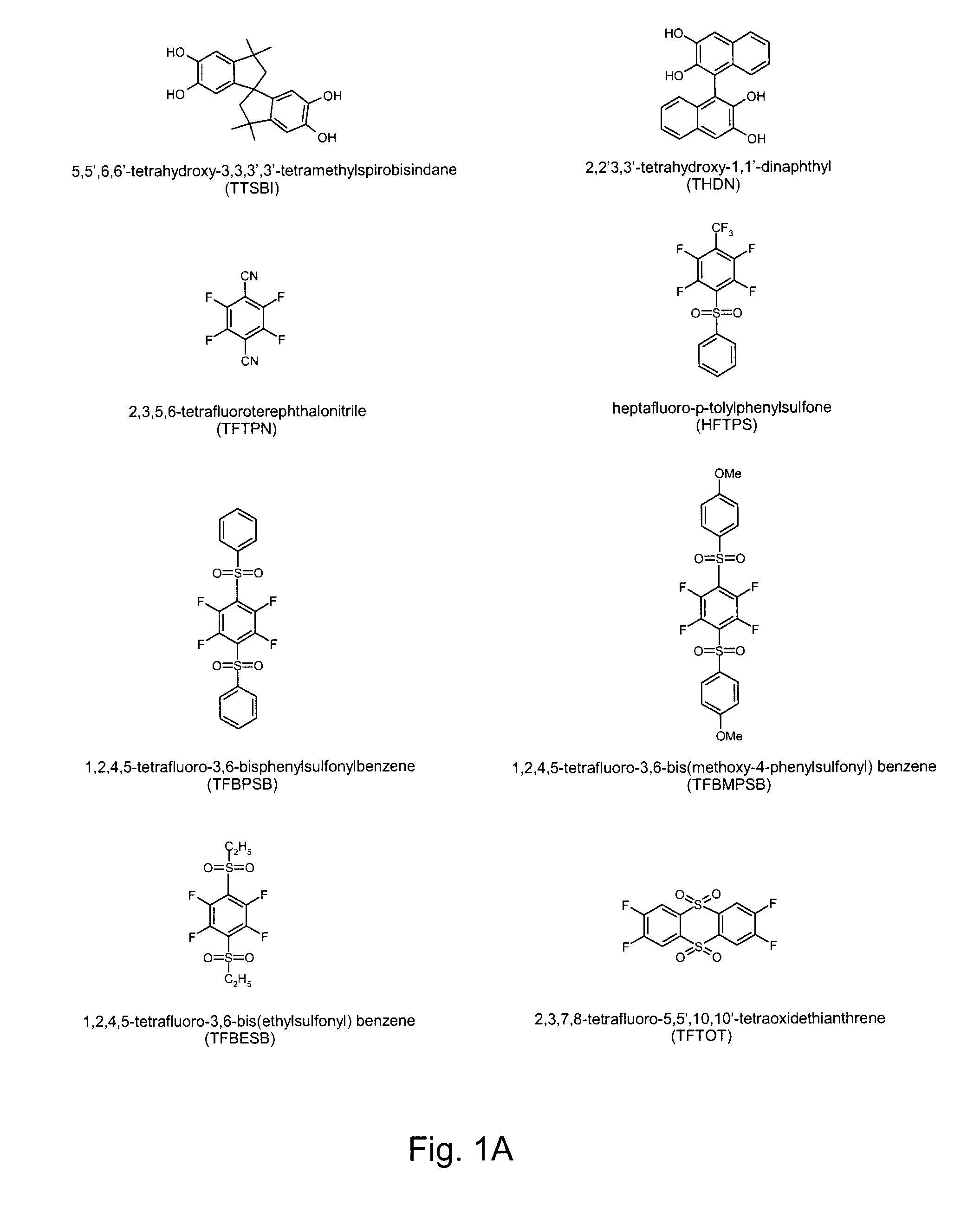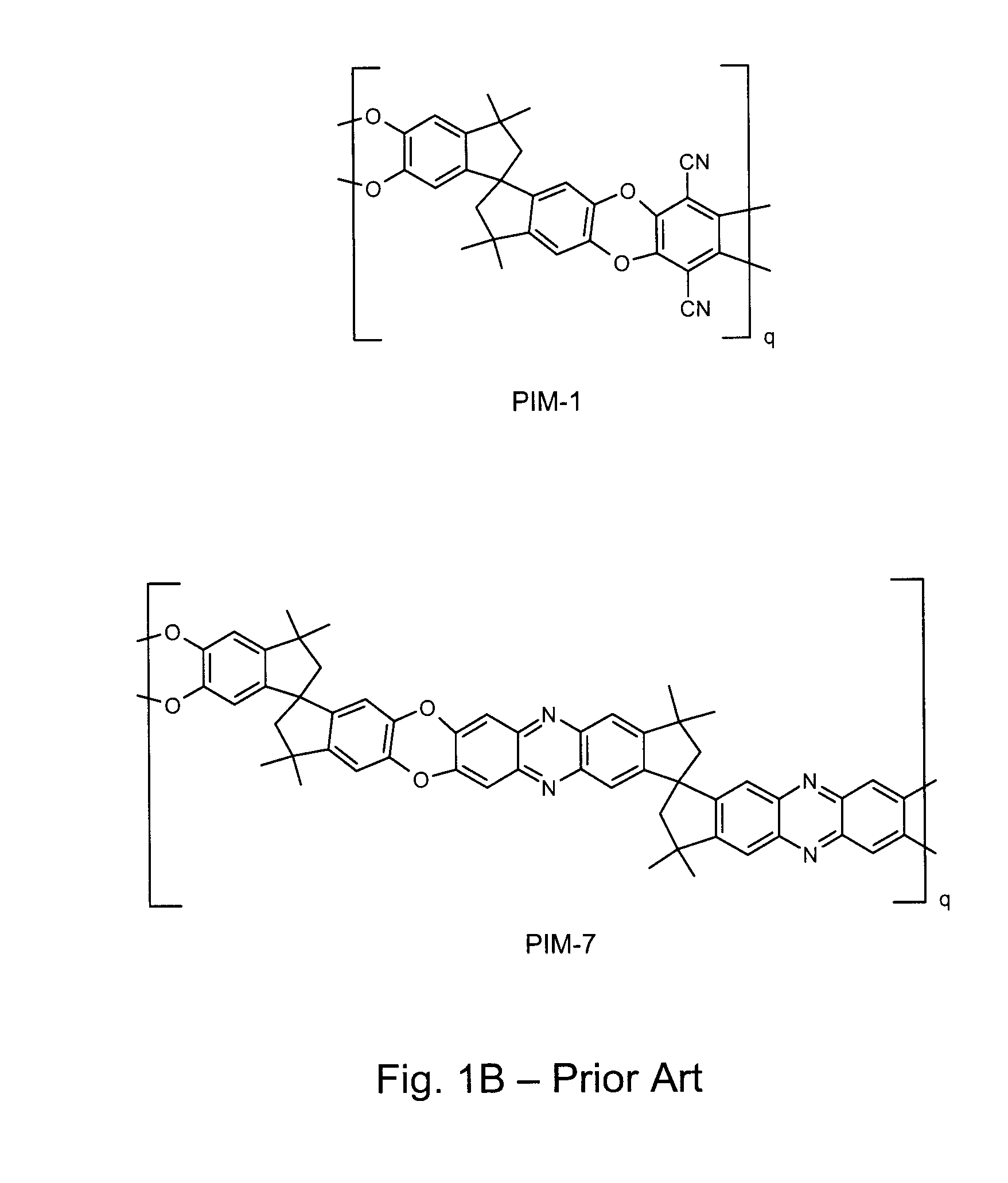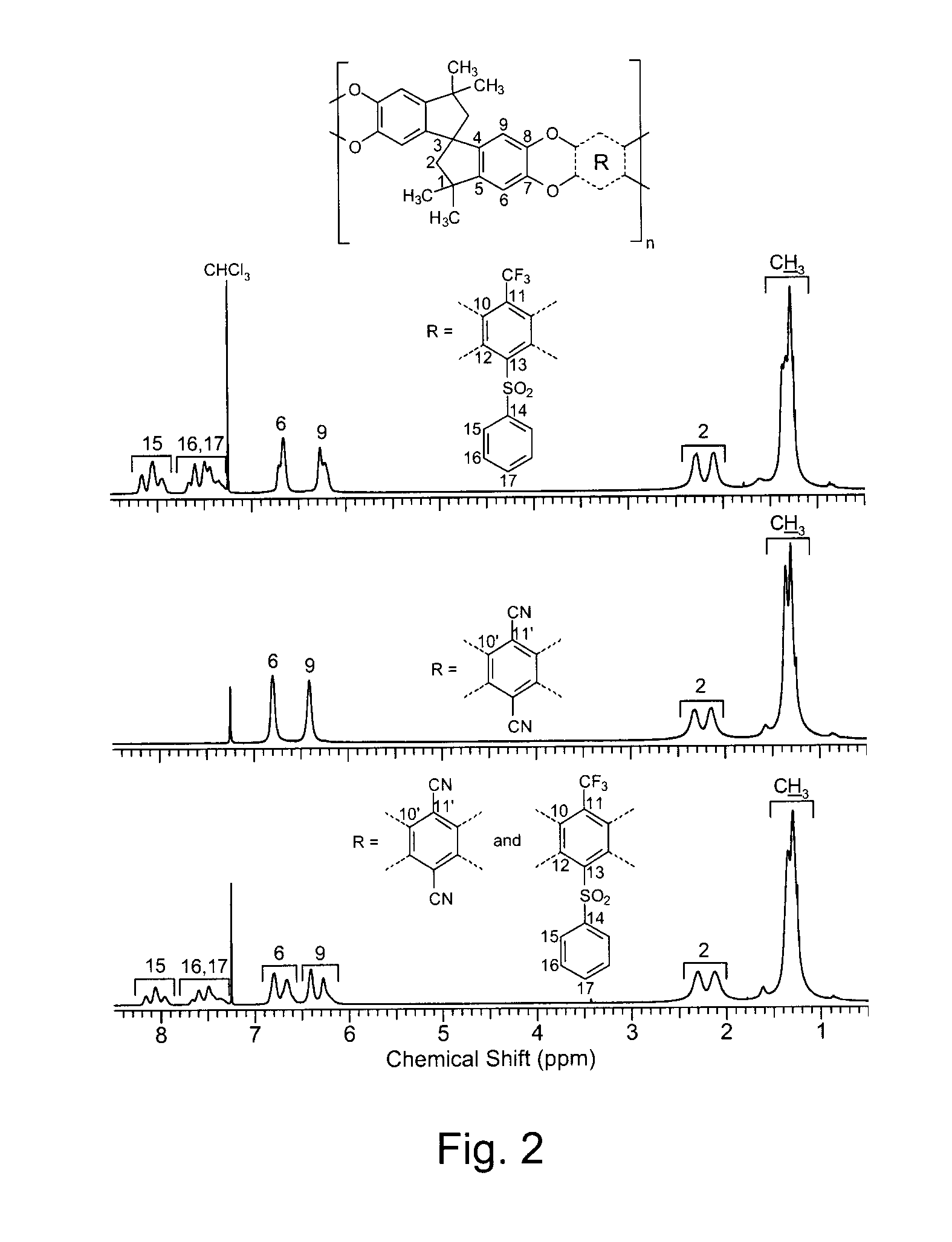Ladder polymers with instrinsic microporosity and process for production thereof
a technology of instrinsic microporosity and ladder polymer, which is applied in the field of ladder polymers, can solve the problems of high polydispersity index, low molecular weight polymer, and few pim structures with high molecular weight to date, and achieves the effects of reducing the amount of polymer precipitation, reducing the amount of crosslinking, and poor solubility of monomer sal
- Summary
- Abstract
- Description
- Claims
- Application Information
AI Technical Summary
Benefits of technology
Problems solved by technology
Method used
Image
Examples
example 1
Preparation of heptafluoro-p-tolylphenylsulfone (HFTPS) Monomer
[0056]Into a 50 mL three-necked flask equipped with a magnetic stirrer, an argon inlet and a condenser, thiophenol (2.42 g, 0.022 mol), NaH (0.88 g, 0.022 mol), DMAc (5 mL) were added. The mixture was cooled to −20° C. using an ice salt bath (NaCl / ice=3:1, w:w) and stirred for 1 h. 4-Bromo-2,3,5,6-tetrafluorobenzotrifluoride (5.94 g, 0.02 mol) in 5 mL DMAc was added dropwise, then the temperature was gradually increased to room temperature. After stirring at room temperature for 6 h, the reaction mixture was poured into water and the crude product was washed 3 times. The orange color oil was extracted with chloromethane and dried over MgSO4. After removal of chloromethane, the resulting crude heptafluoro-p-tolylphenylsulfide was oxidized with formic acid (5 mL) and H2O2 (30%) (6 g) at 50° C. for 2 h, resulting in a white-yellow solid sulfone product that was initially purified by chromatography (using 1 / 1 v / v dichloromet...
example 2
Preparation of 2,2′3,3′-tetrahydroxy-1,1′-dinaphthyl (THDN) Monomer
[0059]A literature procedure was employed [Toda 1989]. A mixture of 2,3-naphthalenediol (16 g, 0.1 mol) and FeCl3.6H2O (27 g, 0.2 mol) was finely powdered by agate mortar and pestle. The mixture was then put in a test tube and irradiated with ultrasound at 50° C. for 1 h. Decomposition of the reaction mixture with dilute HCl gave crude 2,2′3,3′-tetrahydroxy-1,1′-dinaphthyl in 85% yield. The tetrol was recrystallized from THF three times to give white needle powder at 53% yield. Mp>300° C.
[0060]1H NMR (DMSO-d6) δ 6.80-6.82 (d, J=8.0 Hz, 2H), 6.94-6.98 (t, J=8.0 Hz, 2H), 7.14-7.18 (t J=8.0 Hz, 2H), 7.24 (s, 2H), 7.64-7.62 (d, J=8.0 Hz, 2H), 8.41 (s, OH), 10.07 (s, OH)
[0061]Elem. Anal. Calcd for C20H14O4 (318.32 g / mol): C, 75.46%; H, 4.43%. Found: C, 75.41%; H, 4.56%.
example 3
Preparation of Disulfone Monomers
[0062]Three dithioethers were synthesized by modifying known procedures [Kulka 1959; Robson 1963; Langille 1972]. Generally, into a 250 mL three-neck flask equipped with a magnetic stirrer, an argon inlet and a condenser, a thiol (54 mmol), NaH (54 mmol), and dry pyridine (15 mL) were added. The reaction mixture was cooled to −20° C. using an ice salt bath (NaCl:ice=3:1, w / w), and stirred for 1 h. Thereafter, the reaction mixture was added dropwise into hexafluorobenzene (27 mmol) and the temperature was gradually increased to room temperature. After stirring at room temperature for 30 min, the reaction mixture was refluxed for another 20 min and then poured into water. The crude product was washed with 8 N hydrochloric acid and extracted with dichloromethane and dried over MgSO4.
[0063]After purifying, the dithioethers (5 g) were oxidized with formic acid (15 mL) and H2O2 (30%, 20 g) and maintained at 100° C. for 24 h, resulting in white disulfone pr...
PUM
| Property | Measurement | Unit |
|---|---|---|
| temperature | aaaaa | aaaaa |
| temperature | aaaaa | aaaaa |
| temperature | aaaaa | aaaaa |
Abstract
Description
Claims
Application Information
 Login to View More
Login to View More - R&D
- Intellectual Property
- Life Sciences
- Materials
- Tech Scout
- Unparalleled Data Quality
- Higher Quality Content
- 60% Fewer Hallucinations
Browse by: Latest US Patents, China's latest patents, Technical Efficacy Thesaurus, Application Domain, Technology Topic, Popular Technical Reports.
© 2025 PatSnap. All rights reserved.Legal|Privacy policy|Modern Slavery Act Transparency Statement|Sitemap|About US| Contact US: help@patsnap.com



